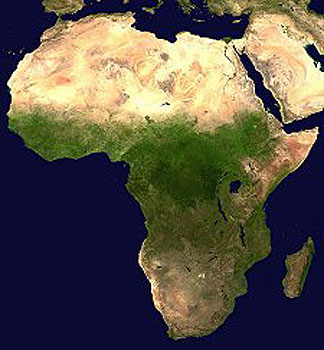Research Objectives
An integrative research program focused on biodiversity conservation solutions
The overarching goal of the CABAlliance is to develop an integrated evolutionarily-informed framework for protecting and managing central African biodiversity under climate change that is grounded in the socioeconomic constraints of the region. The research includes aspects of biology, geosptial modeling, and socioeconomics research.
The rainforests of the Congo Basin and Gulf of Guinea are one of the most important centers of biological diversity in the world, harboring roughly 20% of all known species of plants and animals. While numerous efforts have been made to prioritize regions for protection, habitat conversion and deforestation continue at an alarming rate, not only disrupting the dispersal abilities of remaining populations but also severely limiting their capacity to respond to future climate change. Previous conservation strategies have been based on criteria such as irreplaceability and vulnerability, but do not specifically incorporate the evolutionary processes that produce and maintain biological diversity.
We are addressing these problems using an innovative strategy that is both evolutionarily informed and multi-disciplinary in nature. The CABAlliance unites senior investigators, junior researchers and students from the U.S., Africa and Europe into a common research and education plan centered in Gabon and Cameroon. Both central African countries are biologically-rich with burgeoning protected area networks spanning the rainforests of the Congo Basin, Gulf of Guinea and flanking forest-savannah ecotone. In specific aim 1, we will use a novel modeling approach to map environmentally-associated genomic and phenotypic turnover in a diverse suite of focal taxa and assess the overlap of these zones of elevated biotic turnover with patterns of species richness and currently protected areas. In specific aim 2, we will evaluate the extent to which evolutionary adaptation, phenotypic plasticity and landscape connectivity might mediate future threats from climate-driven alterations to the landscape. In specific aim 3, we will use this information to develop an integrated prioritization scheme that ranks candidate areas for protection based not only on their evolutionary potential and landscape connectivity, but also on their estimated socioeconomic costs, degree of threat and cultural value.
Specific Aims
Drawing on our recent success mapping adaptive variation and identifying conservation priorities (Thomassen et al. 2011), we will focus on the following three specific aims and their associated research questions (Figure 1):
1) Map adaptive variation to identify geographic areas that maximize evolutionary potential (Steps I-III). How and where is adaptive genetic and morphological variation distributed across landscapes? What is the degree of overlap in adaptive potential between taxa and how does this compare to areas of elevated species richness and current protected areas?
2) Predict species adaptive, plastic and movement responses to climate change (Steps II-IV). What is the capacity for these species to respond to projected climate change through evolutionary adaptation, phenotypic plasticity and dispersal?
3) Incorporate socioeconomic data and threat into protected area prioritization schemes (Steps III-V). Given this information, what recommendations can be made to improve protected area design while at the same time minimizing the costs to human populations?

Figure 1. Flowchart of species distribution and spatially explicit modeling approaches to map current and potential future biodiversity across a landscape. The results, when combined with degrees of threat and socioeconomic impacts, can be used to prioritize areas of importance for conserving evolutionary processes under climate change. Each step in the process is indicated by roman numerals.




